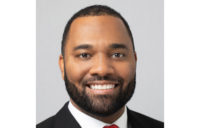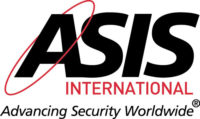As companies navigate the ever-changing dynamics of a hyper competitive marketplace, one critical factor stands out as essential for long-term viability and prosperity: embracing diversity, equity and inclusion (DEI) as strategic imperatives.
When examining the business case for implementing DEI initiatives, the data speaks volumes, underscoring a clear correlation between diverse, inclusive workforces and enhanced business performance. Consider:
- Diverse companies enjoy 2.3 times higher cash flow per employee. (Deloitte)
- Corporations identified as more diverse and inclusive are 35 percent more likely to outperform their competitors. (McKinsey)
- Inclusive teams improve team performance by up to 30 percent in high-diversity environments. (Gartner)
- Companies with diverse management teams had a 19 percent increase in revenue compared to their less diverse counterparts. (BCG)
“Hiring the right people for any available position is really critical for any business. And here in the security industry, attracting new and diverse talent is really essential for our own growth, change and the advancement of the industry,” says Tracy Larson, president of White Plains, NY-based WeSuite, a sales management software company.
As voluminous research and studies illustrate, a lack of diversity and inclusion poses significant risks to a company’s long-term success, impacting its ability to innovate, attract top talent, maintain a positive reputation, and potentially miss out on valuable business opportunities and market segments. The same dangers can apply to entire industries that have historically lacked diversity and inclusion within its ranks. The security industry is no exception in this regard.
Ahead, SDM taps insights and perspectives from numerous security industry leaders about the strides the industry is making — and the long road still to travel — to become more diverse and welcoming. Read on to learn best practices for building diverse staffs, retention strategies, industry efforts to become inclusive, remaining challenges and other insights.
The DEI Value Proposition
Diversity and inclusion are not just moral imperatives but strategic necessities for companies seeking sustained growth and success, sources tell SDM. Demonstrating the value proposition of DEI underscores its pivotal role in driving innovation, enhancing employee engagement, and ultimately, boosting organizational performance and competitiveness.
A diverse workforce allows companies to better understand and connect with a diverse customer base, allowing them to expand the scope of their business offerings and meet the needs of a broader base, explains Maria Cambria, vice president of demand generation, FLIR, a Teledyne company, Wilsonville, OR.
“Building a diverse team is one way security companies can advocate for different perspectives, experiences and skills and foster a culture of creativity,” says Cambria, a long-time mentorship leader who formed an employee resource group for women at Teledyne FLIR called Elevate. “While investment in an inclusive workforce offers several immediate benefits, like greater innovation, the long-term result is happier customers.”
Companies need to harness the power of different perspectives and break down silos of isolation by reflecting the communities they serve, explains Tony Byerly, global president, Securitas Technology, Uniontown, Ohio, a founding sponsor of the SIA Women in Security Forum (WISF).
“For Securitas Technology, we know our clients are navigating an increasingly complex business environment and we remain committed to serving them as a trusted advisor and partner,” Byerly says. “In support of that it’s critical to elevate our view with diverse perspectives and going beyond the norm to bring together individuals from different cultures and backgrounds to share their unique experiences and thoughts, which can challenge and advance the status quo.”
Elaine Palome, director of human resources for the Americas, Axis Communications, Chelmsford, MA, stresses the dearth of — and competition for — qualified talent in the marketplace is an imperative as to why security companies must prioritize DEI.
“Just from sheer logistics and numbers alone there are not enough people to fill the jobs that we have in the industry. Women in particular makeup 50 percent of the workforce, and if you’re not looking for ways to attract women, you’re leaving out 50 percent of the potential talent pool,” she says. “So from a very top level, simple perspective, it’s a numbers game.”
Yet the numbers game is just for starters, expresses Palome, a founding member of the SIA WISF steering committee and the 2021 recipient of the SIA Progress Award, which celebrates individuals who are advancing opportunities and success for women in the security industry.
“Our partners and customers want to work with people that look like them. And being that half of the market is populated with women and people of color and other types of diversity, they want to work with people who look a lot like they do,” she says. “So we need to be attracting more women and more types of diverse talent to the industry.”
Companies that are committed to DEI are going to attract better talent and produce better results from having a variety of perspectives to help solve business challenges, explains Candice Aragon, vice president of marketing & education, PSA, Westminster, CO. Fostering a safe environment for all employees results in lower turnover rates, she adds, saving money on recruiting and onboarding costs and enhancing work relationships.
“Making our workspaces more inclusive increases employee satisfaction and gives organizations a great reputation among clients as well,” says Aragon, who was appointed vice chair of the SIA WISF in 2023 and also named a SIA WISF Power 100 honoree. “There is really no downside to prioritizing diversity and inclusion. I had a former manager with a picture of a dinosaur on his wall that said, ‘Adapt or Die!’ I think of this often. If our businesses don’t embrace and support diversity and inclusion, they won’t survive. It’s no longer a ‘nice to have,’ but simply inevitable.”
With the millennial generation now constituting the largest segment of the workforce and a significant number of Baby Boomers retiring annually, this demographic shift carries profound implications for workplace dynamics and corporate culture. Young professionals — including Generation Z, the demographic cohort that comes after millennials — hard research prospective employers to evaluate the company’s values and assess if they align with their own, explains Eddie Reynolds, co-founder and CEO of Irvine, CA-based Iluminar, the only black woman-owned manufacturer of security hardware in the world.
“One of the key issues that resonates with millennials and Gen Z is a company-wide focus and prioritization of DEI,” she says. By making a commitment to DEI, companies will attract the best candidates.”
Reynolds has been actively involved in the development of SIA’s Talent Inclusion Mentorship Education (TIME) program, which is designed to promote DEI and empowerment of underrepresented identities in the security industry by creating a well-defined pathway for learning and development. Companies that prioritize DEI initiatives stand to gain “fresh, dynamic perspectives by listening and learning from people who are different from you and who are outside of your wheelhouse,” she says.
“This is one of the many reasons why companies invest in research and development projects, bringing together experts from various fields to assess problems and develop new solutions,” Reynolds continues. “At the end of the day, we all want to be loved and feel like we belong. Prioritizing diversity and inclusion raises morale in the workplace. When employees feel included and appreciated in the workplace, they are more productive at work, yielding greater profits for the company.”
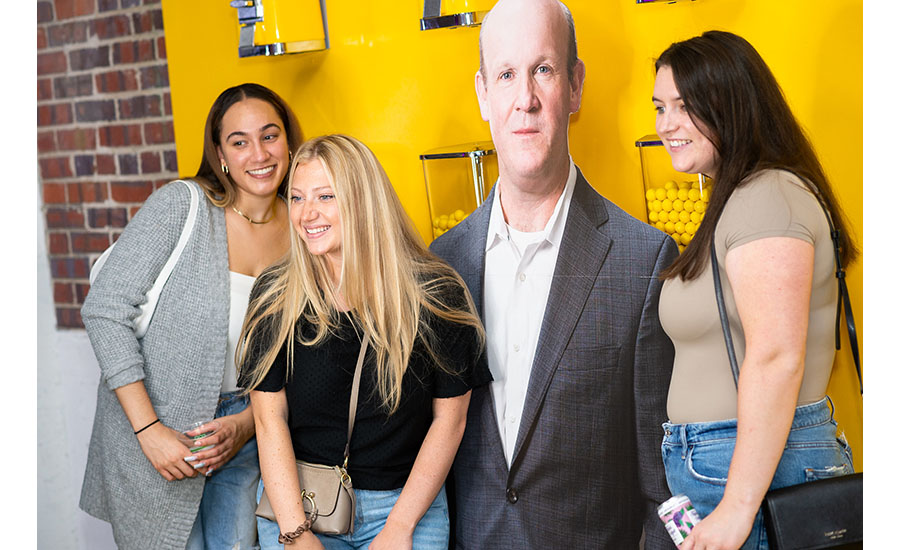
As a leading advocate for workplace diversity and inclusion initiatives within the security marketplace, Don Erickson, CEO of the Security Industry Association (SIA), has been instrumental in championing and supporting various programs aimed at fostering a more inclusive and equitable workforce.
In the following interview, Erickson addresses some of SIA’s workforce development initiatives, shares insights on stakeholder collaboration and more.
SDM: How important is collaboration with other organizations and stakeholders in achieving SIA’s outreach goals?
Erickson: Very important. There are certain business challenges — such as finding qualified talent and promoting the value of diversity, equity and inclusion — that are more effectively addressed through greater efficiencies and coordination between organizations who are motivated by delivering results first and receiving individual credit last.
The three most substantial examples of collaboration intended to address specific DE&I and workforce objectives facing the industry that have led to outcomes valued by mutual members include 1) the Security LeadHER conference presented by SIA and ASIS International, 2) the Foundation for Advancing Security Talent (FAST) co-managed by the Electronic Security Association (ESA) and SIA, and 3) collaboration with the end-user community to develop the SIA Security Systems Technician (SST) Apprenticeship Program.
SDM: What are some key aspects about the SST Apprenticeship program you’d like the industry stakeholders to know more about?
Erickson: SIA’s SST apprenticeship program is a new initiative for security technicians and installers. This 12-month program, created to help address the security industry’s workforce challenges, diversify the talent pipeline and foster career development opportunities within the industry, is designed to develop basic networking, IT and cybersecurity competence among systems installers through workplace learning and one-to-one mentoring. Unlike other related programs, the SST apprenticeship program uniquely addresses both physical device installation for low-voltage security equipment and cybersecurity controls for safeguarding electronic infrastructure and technology.
The initiative aims to raise the level of applied knowledge and skill in cybersecurity and information technology for systems technicians who are responsible for the proper installation, configuration, networking and troubleshooting of low-voltage security devices and equipment; attract new talent into the security industry and provide a pathway for long-term career development in technical roles; and foster diversity through targeted recruitment efforts and partnerships with special interest groups supporting veterans, women and other underrepresented minority groups entering the workforce.
SDM: What challenges has SIA encountered in its efforts to expand outreach, and how has the organization addressed or overcome these challenges?
Erickson: Sometimes another organization may not have the staff or financial resources needed to support a productive collaborative relationship. For these joint initiatives to work well, both organizations need to have skin in the game and dedicate their staff time and expertise, and member participation.
It is difficult to work with an organization who simply wants to add its name to a project that may be 100 percent developed and funded by other organizations and not lend any support in terms of marketing assistance. We tend to be more inclined to work with organizations who can share resources.
Additionally, regular communication among team leads on sponsorship sales, marketing efforts and content teams is essential. It is critical to define roles and responsibilities at the very start of any joint work on a process. Lastly, some organizations in the IT community have the initial impression we are interested in addressing the cybersecurity skills gap, as opposed to primarily focusing on physical security technology jobs, which is our current approach.
SDM: What advice would you give to other organizations looking to enhance their workforce development initiatives and outreach efforts?
Erickson: Workforce development and attracting and reskilling employees are a business challenge that is bigger than any one trade association or organization. One group cannot address this challenge alone. The same can be said for raising awareness of DE&I investments. My advice would be to pay close attention to strategies adopted by other industries that may be appropriate to implement in the security industry.
I would also recommend against rushing out to create certificate or certification programs without conducting a job task analysis and market research demonstrating demand for such programs and to avoid duplication with similar programs that are offered by other organizations.
Companies can reap a competitive advantage by thinking more broadly and embracing diverse perspectives that people bring from a variety of backgrounds, thereby fostering innovation in products and services, suggests Larson, a 2023 SIA WISF Power 100 honoree, a member of WISF and a mentor in the TIME mentorship program for young security industry professionals.
“Building teams that operate well together — because they feel valued, because they feel heard — that’s really critically important for the business to operate well,” she explains. “So the people who are really curious and open and most willing to try something new or different, they are the ones that take the risk to move into new directions, to find innovation and to change. Those are the ones that are needed, because we have to meet changing needs of customers, and stimulate the industry and where we’re going.”
Strategies for Cultivating Diverse Teams
Embarking on a path to cultivate a diverse workforce requires actionable strategies and practical steps to foster an inclusive environment from the ground up. But where to begin?
“The first step is always awareness,” Byerly says. “Acknowledging that you’re not where you need to be, identifying gaps and making a commitment to find a solution that removes barriers is paramount. It’s important to realize that each company’s program and needs will be different, but what’s most important is to make continuous progress.”
For companies just starting out, an inclusive hiring program can begin with something as simple as having an open dialogue with those in recruitment positions, Byerly says.
“For us, attracting a diverse pool of candidates starts with clearly communicating our mission and values in our recruitment efforts. At Securitas Technology, we believe our employees are a valued member of a team that is shaping the future of the security industry,” Byerly says. “As potential candidates explore career opportunities with us, it’s important that we show examples of how being part of a community that prioritizes growth, values contributions, and collaboratively works as one team is fundamental to our mission of creating a safer and more secure world.”
To support that mission, Byerly adds, Securitas Technology also shares the programs it has in place that are designed to bring together different perspectives and empower people to grow, such as the company’s Leadership Development Program (LDP) and Technician Certification Program.
Installing security contractors looking to begin implementing an inclusive hiring program have a vast array of resources available to assist, says Aragon. Her range of suggestions include attending sessions at industry events such as PSA TEC, ISC West and Security LeadHER, an event launched in 2023 by ASIS International and SIA that will next be held June 24-25 in Phoenix.
Likewise, rely on your network to crowdsource information from other systems integrators who have had similar journeys, Aragon stresses.
“There are PSA members doing some truly creative things to attract more diverse employees. We have a few integrators who work with their local military bases to capture veterans as they retire from the armed forces,” she adds. “One integrator has built an apprenticeship program to expose at-risk high school age students to opportunities in trades. Others are focusing on where they recruit for positions — not simply posting in the same places they always have, but rather looking to trade schools, demographic-specific job boards, diversity-focused job fairs, etc.”
For Clear Cloud Solutions, a Southern California-based integration firm founded by Daren and Brenda Masten (featured on this month’s cover), outreach to underdeveloped communities is a mainstay in their efforts to build diversity and support the communities they live and work in.
The Mastens are collaborating with SIA and i-PRO for a new initiative to promote and expand eligibility for training, scholarship and mentorship, as well as foster greater engagement with the security industry and Native American populations (see sidebar). Daren Masten, a member of the Hoopa Valley Tribe, a federally recognized tribal entity in Humboldt County, Calif., suggests there are inherent factors beyond ethnicity and gender to consider about people from communities experiencing economic hardship compounded by social issues like drug addiction and crime.
“If you’re looking to hire someone, don’t assume because they came from an underdeveloped community that they’re going to be underachievers,” he says. “There is a good chance that because they’ve likely gone through hardship, they are going to probably overcome obstacles and handle tough times better than somebody who hasn’t,” he says.
Masten adds, “We don’t have quotas. We don’t struggle finding candidates because we hire people from our communities. And in California we have very diverse communities. But we go and seek people. One of our biggest goals now is just go and find those underprivileged people and mentor them, get them excited and lure them toward a path that gives them a long-term opportunity, instead of the drug issues that might be luring them today.”
FLIR has changed its approach to recruitment and retention in several ways, says Cambria, who was named a 2022 Women in Security Power 100 honoree. The company’s efforts include enhancing its interview process to be more accessible and inclusive, re-strategizing where open positions are promoted, and expanding its benefits offerings to include things like paid parental leave and mental health resources.
“Regardless of the degree to which your organization has implemented DEI best practices, supporting and encouraging employee resource groups can help create a safe place for employees to share common interests and experiences,” Cambria explains. “Providing both professional and personal support for underrepresented groups within your organization in this way helps form a sense of community and belonging within the workplace, offering a voice to individuals who may feel isolated on their own and expanding access to important resources.”
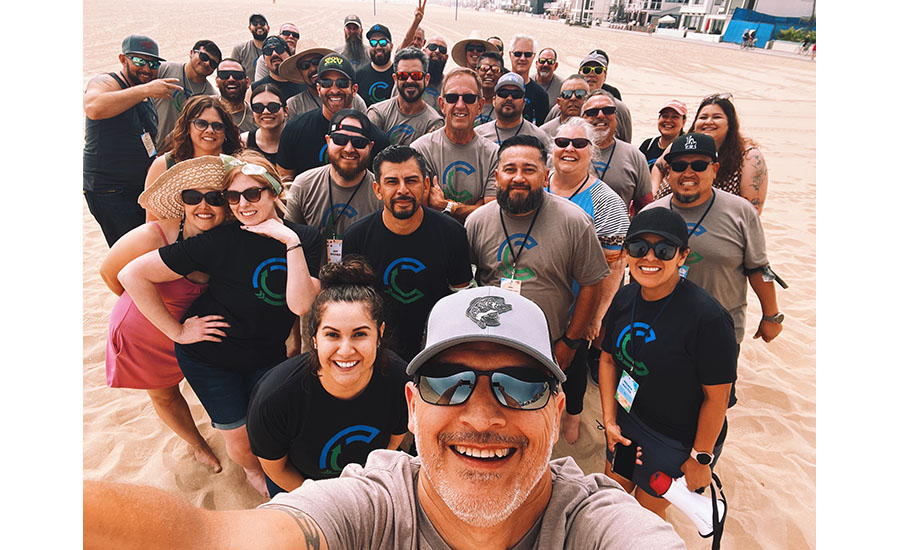
Building a diverse, inclusive environment in the workplace starts with management, says Reynolds, who was honored in 2018 with the inaugural SIA Progress Award, honoring individuals who have shown excellence in their advancement of opportunities and success for women in the security industry. The idea is when management chooses to implement DEI best practices and ensure diversity in the C-Suite — encompassing various ages, genders and ethnicities — the entire company adopts a culture of inclusion.
“Put simply, making a conscious commitment to advancing DEI and showcasing this commitment is effective in attracting diverse talent,” Reynolds says. “One example of this is when companies sponsor initiatives for the professional development of a minority group, whether that is a SIA Women in Security Forum breakfast, a SIA RISE conference or an International Organization of Black Security Executives Scholarship Program for Students. Candidates pay attention to companies putting money where their mouth is.”
Reynolds advises installing security contractors new to DEI to prioritize best practices for greater diversity and inclusion, which will ultimately benefit employee well-being and ensure future growth and business success.
“Commit, make a plan, and in the words of Nike, ‘Just do it,’” she adds. “If you need ideas of where to start, look at what other companies are doing to advance DEI, emulate what you like and adopt it for your company.”
Finding the wherewithal to take the leap once and for all to become more diverse and inclusive is half the battle, Palome says.
“The first thing to do is to educate yourself, just find out. Do your research on why it’s even an important path to follow so that you can convince yourself that, yes, this is something that I need to do,” she explains. “And then take small steps. Have the dialogue with your management team or your staff if you’re a five-person shop. Just get the dialogue going. Why is diversity important? Is it even important? What are the things that we could be doing differently? Take it in small bites. Start with one thing like having a guest speaker come in and talk about diversity.
Empowering Through Mentorship
Mentorship initiatives play a pivotal role in both retaining employees and cultivating a more diverse workforce by providing underrepresented individuals with valuable guidance, support and opportunities for advancement within the organization.
Mentorship not only contributes to workforce retention and diversity but also serves as a cornerstone for building a strong company culture, Masten says, fostering collaboration, camaraderie and a sense of belonging among employees.
“For me it is about getting in front of people in these communities that you can mentor and you can give them hope. And you can give them an identity — you can be a professional, you can be useful. You can be a treasured possession in a company and help them grow,” Masten explains. “We reach out to Native American groups that are trying to place and give opportunities to natives, where they might be struggling on a reservation and reaching out to those diverse communities and finding out how can we get in front of young people to mentor them. And when you can do that, then you’ve really done something.”
Investing time and energy in mentorship programs is an easy way to help employees of all backgrounds build a foundation of important skills groups whose pathway to leadership positions are otherwise more challenging, Cambria says.
“Sponsorship programs, on the other hand, can help combat bias and promote an inclusive workplace culture by changing the way companies acknowledge milestones and achievements,” she adds.
Referencing Securitas Technology’s Leadership Development Program as a model, Byerly says the program targets high-potential, non-management talent as future leaders, leveraging executive sponsors as mentors and advocates to help employees grow and advance with the company.
“The key for leaders creating an inclusive environment that fosters employee retention is intentionality and leading by example,” Byerly says. “It’s about doing the right thing by people regardless of their background, ethnicity, gender, etc. This must be a behavior that is modeled at the top and reinforced throughout the organization. It’s not about a slogan or company signage, it goes far beyond that — decisions reflect values, and actions speak louder than words.”
Mentorship programs can take various forms and structures, catering to diverse needs and preferences within the organization. Networking is intrinsic to mentoring, as it not only expands mentees’ professional connections but also facilitates knowledge sharing, skill development and access to opportunities within the industry.
The Security Industry Association recently launched a new workforce development program for Native American and indigenous communities that aims to enhance access to SIA services and programs such as training, scholarships and mentorships.
In an expansion of its diversity, equity and inclusion (DEI) efforts, SIA said it is making a concerted effort to engage with Native American communities, which have historically faced isolation, higher unemployment and poverty rates than the general population, challenges accessing quality education and jobs, and other barriers to economic opportunity.
Created in collaboration with systems integrator Clear Cloud Solutions and i-PRO, the initiative will expand eligibility for and access to SIA programs such as Security Project Management (SPM) training, SIA RISE community for emerging leaders, and the SIA Women in Security Forum (WISF). Native American community members will also have access to scholarship programs through RISE and WISF, the Security Systems Technician Apprenticeship Program, the Talent Inclusion Mentorship Education (TIME) program and SIA’s Security Cornerstones Learning Series.
Daren Masten, president of Southern California-based Clear Cloud Solutions, says as a Native American who grew up on a reservation, he has personal and intimate understanding of the challenges and roadblocks that exist for young indigenous peoples. Masten’s own personal journey has been marked by difficult obstacles, some self-inflicted. He credits the guidance and support of mentors who nurtured his potential for his success.
“By collaborating and teaming with other people that have great ideas, we’re going to combine synergies to provide workforce development and mentoring,” Masten tells SDM. “And then we’re going to take what works and take this to other tribes. This will include trying to create classroom-type environments that will enable these people to train them. That’s our goal; get people interested. If they don’t get on a career path then what happens to them? Between drugs and unemployment, they’re going to go down a road that’s far too prevalent for natives.”
To read more about the new initiative, go here.
“It is so critical,” Palome says. “For instance, we could not have gotten as far as we have in the industry without the SIA Women in Security Forum. There were five of us that started it and now we’re over 1,400 members strong in five years.”
Last year’s inaugural Security LeadHER event, a collaboration between SIA and ASIS International, proved such a success that hosting it again in 2024 was a “no brainer,” says Palome, who served as a co-chair for the 2023 event.
“Last year was just a test balloon to see if we would get enough people to attend. There was such an interest in that event that we actually had to turn people away,” Palome says. “We are trying to create a bit of a movement. And to do that you need people to be involved in that movement. You need a minimum number of people to be force multipliers within the industry.”
The group directs a mentorship program that pairs junior level staffers with very senior level women in the industry to help them break barriers, increase their networks and get themselves visible, Palome explains. The group also partners with Dress for Success, a global not-for-profit organization that empowers women to achieve economic independence by providing a network of support, professional attire and development tools to help thrive in work and in life.
“We aren’t just an organization of hens that get together and chit chat about how nice it is to have women in the workplace,” Palome says. “We do real things that affect real change in the organization and in the industry in general.”
Margie Gurwin, the founder and owner of Babylon, NY-based Content Creation Partners (CCP), a developer of B2B marketing content for security technology providers for more than 25 years, serves on the WISF steering committee, among other related industry mentoring and volunteer work. She notes now incredibly important networking is for workforce development initiatives.
“I can’t emphasize enough how important it is to have groups like WISF that are welcoming to not just women, but transgender people and all forms of diversity,” Gurwin says. “At a WISF gathering you feel like you are taken for who you are and there’s no trying to fit in. Networking is what makes all of us succeed in the long run. People who are part of this organization can connect and if they get laid off, they can find another job quickly because they’ve made all these connections. In the past, those relationships may not have existed.”
Gurwin is also quick to highlight the critical role that many males in the industry now play in advocating and supporting diversity programs.
“The male partners who have taken women mentees under their wing and helped them to succeed. The men who have participated in WISF events. Their participation is so important to making our vision a reality,” she says. “And there’s more and more of them every year.”
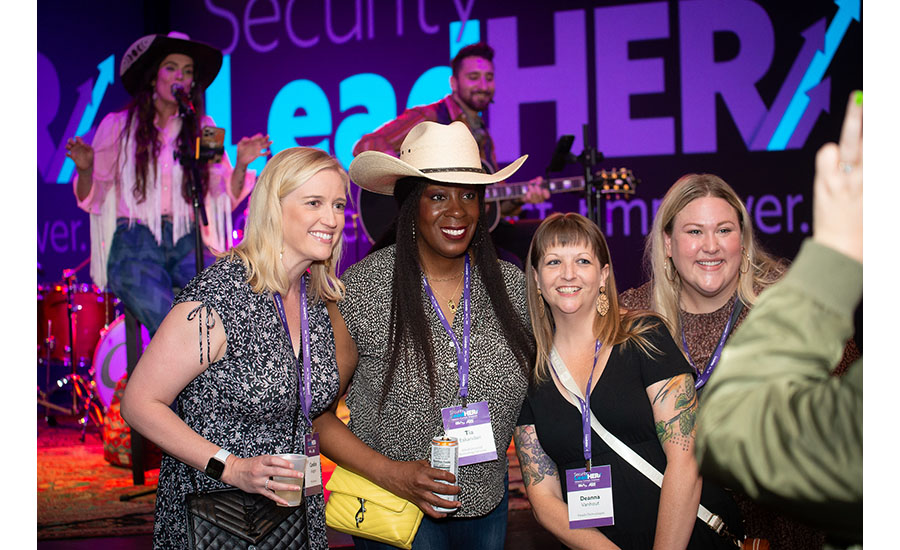
Industry Evolution & Outlook
Prior to her work in systems integration and later co-founding WeSuite, Larson’s professional career included managerial and executive roles in the construction industry. Making the transition from one white male-dominated industry to another was not without trepidation.
“When I came into the security industry, I was surprised by how many of the women I saw, primarily at trade shows, were not like me working,” she recalls. “They were accompanying a husband or someone else. Or they were working in the booth, but they were hired talent.” The sheer lack of diversity made her question, what kind of opportunity can you have if you don’t see enough of others like you?
“Throughout my career, I’ve been in non-female roles, the nontraditional roles. I have specific memories that were very challenging,” Larson recalls. “I’ve had the clammy hand. I’ve had the door closed and all of a sudden some guy on me — even when my title was vice president.”
Now years later, Larson can look across the security industry landscape and point to a lot of forward momentum with equality and workforce development efforts, though much improvement remains a vital necessity.
“I often think of the industry today as this really colorful quilt. We’re seeing different cultures, we’re hearing different languages. Everything matters,” she says. “We’re moving in a positive direction. It’s encouraging we are now shining a light on the industry, pulling the switch and saying, ‘Hey, look over here. Don’t look away. This is good stuff over here.”
Gurwin — who recalls a yesteryear when female representation at an industry event mostly amounted to a former Playboy Bunny taking pictures with attendees — has also witnessed the industry making strides toward more diversity.
“I would go to trade shows as the head of marketing and men would assume I was there to hand out literature and scan badges,” she says. “If I asked if I could help them, they were sure that my answer would be inferior and wait to speak to one of my male colleagues.”
Gurwin says she began to see a change in the industry when the convergence era began with networked security and IT. Younger, more college-educated professionals were coming to the shows. Women were majoring in computer science and beginning to make inroads as engineers behind the scenes.
“It’s been a trajectory like a very slow climb, and all of a sudden we’re really starting to shoot up,” Gurwin adds. “I couldn’t be more enthusiastic about where I see an industry going in terms of inclusivity. It is still way too white. I don’t see enough people of color at all, but it is better than it used to be.”
Palome says when the SIA WISF was launched in 2018, women comprised roughly 10 percent of the industry. “I’d like to think we’re better than that, but I have to be honest we’re not much better.”
By example, at the time Axis Communications created its DEI program more than five years ago, women represented 29 percent of the company’s management team, of which Palome is a member. The percentage today is around 33 percent.
“We’ve only scratched the surface on diversity. It takes a long time to move the dial. We started with a focus on gender diversity because it is the largest and most visible (demographic). But there are so many different types of diversity that we haven’t even explored yet,” Palome says. “That is going to be the next task, not only for Axis but for the industry as well — attracting different types of diverse candidates. Women are only one cross section of it.”
Over the past several years, Cambria has witnessed key industry stakeholders diversify their leadership teams to include professionals from underrepresented backgrounds. To expand and support this effort, she would like to see companies offer more robust leadership development and training opportunities to foster inclusive hiring practices throughout their entire organization, from entry- and mid-level positions to executive posts.
“Regularly holding town halls, check-ins and skip-level meetings into a manager’s schedule helps facilitate communication between team members and team leaders,” she adds. “This creates opportunities for employees to ask questions, brainstorm ideas and offer feedback, so managers can better understand the needs of their team and set a higher standard for collaboration, innovation and creative problem solving.”
Organizations across the industry are being more intentional about prioritizing initiatives that empower underrepresented groups of people and moving toward greater diversity, equity and inclusion, Reynolds observes.
“I would like to see greater progress in moving away from so heavily relying on groups or events to advance DEI objectives to instead everyone embracing daily best practices that further DEI,” Reynolds says.
She adds, “I’m hopeful that one day we won’t always need specific initiatives to ensure diversity and inclusion. I hope it will be part of our DNA. However, in the meantime, I’m grateful that these initiatives are moving people in a positive direction toward greater respect and equality.”


